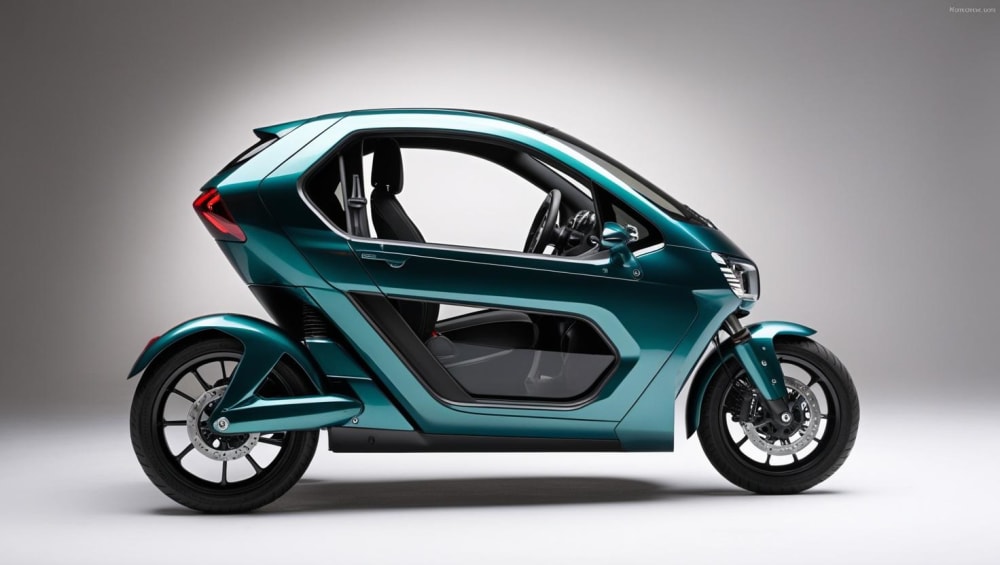The MCYCLE is an innovative, enclosed two-wheeled vehicle that redefines personal mobility by combining the agility of a motorcycle with the safety and resilience of an fire, and environmental wear. This combination delivers cybertruck-grade protection in a smaller, more agile package — without infringing on existing patents.
To maintain balance and rideability, the MCYCLE uses twin gyroscopic stabilizers—precision-engineered flywheels powered by brushless motors. These are housed in CNC-machined aluminum casings, ensuring that the vehicle remains upright even at standstill. This significantly improves usability and safety, particularly in traffic-dense urban conditions.
The drivetrain is intentionally modular, designed to lease or integrate sustainable propulsion systems depending on availability and market needs. Options include hydrogen fuel cells, electric motors, or compressed air engines, enabling the MCYCLE to adapt to future innovations in clean energy. Supplementing this is a solar-assisted roof, featuring lightweight, flexible photovoltaic film that adheres to the body like a skin — adding passive charging capability and enhancing off-grid performance.
Innovative features also include self-healing tires, utilizing smart polymers that automatically seal punctures, and electrochromic glass, allowing real-time tint adjustment for glare control, privacy, or energy savings. Together, these elements enhance safety, durability, and comfort in a sleek, futuristic form factor.
This project is currently at an advanced conceptual stage with 3D visuals, structural research, and materials prototyping in development. While some smaller production elements — such as mirrors, hardware, and lighting — are not yet finalized, they are scheduled for integration during the prototyping phase through technical partnerships.
The MCYCLE’s potential impact spans multiple sectors. In urban mobility, it addresses space inefficiency by occupying less than half the footprint of a car, while delivering far greater safety than conventional two-wheelers. In sustainability, it supports circular design through recycled metals and alternative propulsion. In terms of industry, it opens up opportunities for modular manufacturing, customizable leasing models, and new urban transport categories.
The aim is to develop the MCYCLE into a fully working prototype over the next two years — with plans for commercial pilot programs and international scalability thereafter.
The MCYCLE is a technological leap toward safer, smarter, and more sustainable urban transport.
Like this entry?
-
About the Entrant
- Name:Vanessa Lindberg
- Type of entry:individual
- Software used for this entry:Yes, Blender – Used extensively for 3D modeling, rendering, and visual concept development. Blender’s flexibility allowed for precise modeling of complex curves, compact geometry, and surface aesthetics for both the chassis and body panels. •Fusion 360 – Applied for mechanical design and engineering, including parametric CAD modeling, material stress simulations, and preparing components such as the gyroscopic stabilizers and chassis structure for CNC machining. •Adobe Illustrator & Photoshop – Used for creating high-quality presentation graphics, infographics, and visual annotations, including material layer breakdowns and user interface mockups.
- Patent status:pending





